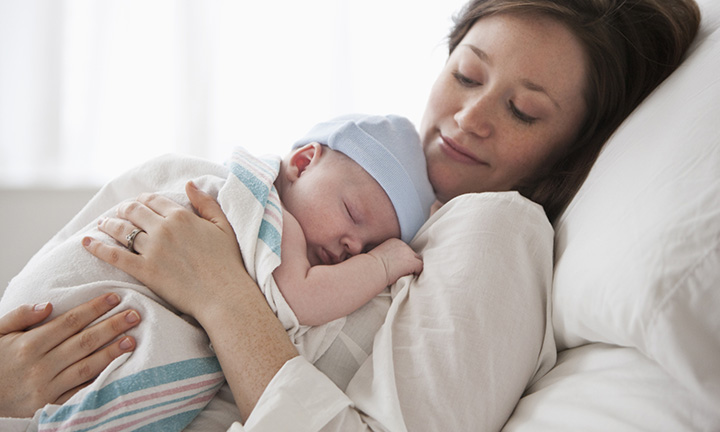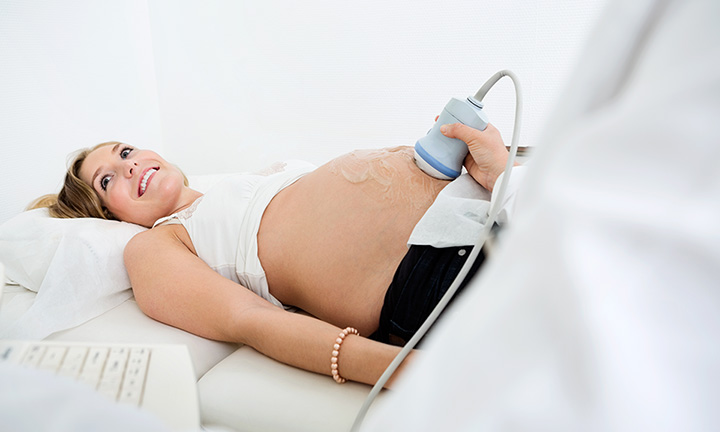
All About Having a Caesarean Section
Caesarean sections are sometimes planned in advance so you’ll know that you’re having one ahead of time, but sometimes an emergency C-section might become necessary for reasons that you can’t predict in advance.
So, whether you know you’re having a caesarean or you’re hoping for a vaginal delivery, it’s good to know about this procedure.
Read on to find out what happens during a caesarean, why it can sometimes be necessary, how long recovery and healing takes and much more as we answer these frequently asked questions.
What Is a Caesarean Section?
A caesarean section, often just referred to as a caesarean or a C-section, is when your baby is delivered through a cut made in your abdominal wall and uterus, rather than delivered vaginally.
Currently, about a quarter of mums-to-be in the UK give birth by caesarean section.
Why Is a C-Section Sometimes Scheduled in Advance?
For some mums-to-be, a planned (elective) caesarean birth is recommended by their doctor as a medical precaution even before they go into labour.
Some of the possible reasons for your doctor recommending an elective C-section can include:
Keep in mind that these reasons alone do not always mean that you will be advised to have a caesarean. For example, more than 40 percent of twin births in the UK are vaginal.
Your midwife and doctor will take a holistic view of your circumstance as well as any potential risk factors when making a recommendation.
Signs of Labour
If you have a planned caesarean that takes place before you go into labour, you won’t notice any signs of labour. However, there’s a chance you might go into labour before the scheduled date of your C-section.
This is why it’s important to be able to recognise the signs of labour whatever kind of birth – vaginal or caesarean – you’re planning on having.
Can you Choose to Have a C-Section for Personal Reasons?
Some mums-to-be choose to have a caesarean for non-medical reasons. If you are considering this, your midwife or doctor will talk to you about the benefits and risks of a caesarean section compared to a vaginal birth.
If you need it, you should also ask for support for dealing with any anxiety about birth and labour. Your doctor or midwife will be able to point you in the right direction so that you can get this kind of help.
If you still want to opt for a C-section after being given all the information and support, your doctor may either offer you an elective caesarean or refer you to another doctor who is willing to carry out the procedure.
When Is an Emergency C-Section Necessary?
Although you might have hoped for a vaginal delivery, there are times when an emergency caesarean is required. Doctors might suggest a caesarean late in pregnancy or even during labour.
For example, a caesarean might become necessary if:
How Do You Prepare for a Caesarean Birth?
First of all, make sure you have your hospital bag packed and ready to go in good time! Starting to pack your hospital bag at some point in the third trimester while not leaving it to the very last minute is a good idea.
If you’re having an elective caesarean, you’ll probably be invited to attend preoperative appointment in the week before the planned date of the C-section. Here you’ll be able to ask questions about the procedure, and you may also
On the Day of the Caesarean
Your doctor or midwife will advise you not to eat or drink anything for a few hours before the procedure.
When you arrive at the hospital, you’ll be given a hospital gown to change into. A catheter (a thin flexible tube) will be put into your bladder. This is for passing urine while you’re under anaesthetic and unable to able to feel or control your bladder.
You may also be shaved near the top of the bikini line.
Once in the operating room you’ll be given an anaesthetic – this is usually a spinal or epidural anaesthetic, which blocks pain without putting you to sleep.
It’s less common to be given a general anaesthetic for a C-section, but it is still used in some emergencies, as well as in situations where a local anaesthetic can’t be administered or if you would rather be put to sleep.
Whatever kind of birth you plan on having – caesarean or vaginal – it’s a good idea to discuss the various pain relief options with your midwife beforehand and note down your preferences in your birth plan if you’re making one.
What Happens During a C-Section?
The caesarean is performed while you’re lying on an operating table, which might be slightly tilted to the left. There will be a screen across your tummy. This means that you (and your birth partner if you have one) won’t be able to see what’s happening.
The procedure usually includes the following steps:
Are You Awake During a C-Section?
If it’s a planned caesarean, you will most likely be able to have an epidural or spinal anaesthetic and remain awake during the procedure.
Sometimes during an emergency caesarean, or if you can’t have a local anaesthetic, you might be put to sleep under a general anaesthetic.
You may also choose to have a general anaesthetic. It’s always a good idea to talk about the risks and benefits of each type of anaesthesia with your midwife or doctor before making a decision.
Can Your Birth Partner Be with You During a Caesarean?
If you have a local (epidural or spinal) anaesthetic, your birth partner can usually be with you during the caesarean procedure, but it’s a good idea to ask your maternity unit beforehand about their policy and/or any temporary or special restrictions that might affect this.
If you have a general anaesthetic, your birth partner usually won’t be allowed into the operating room.
How Long Does a C-Section Take?
Though every mum’s situation is unique, the whole procedure of delivering a baby by caesarean section usually takes around 40 to 50 minutes from start to finish.
Can You Hold Your Baby Right After a Caesarean?
Usually, as long as you and your little one don’t need any urgent medical attention, you’ll be handed your baby for some valuable skin-to-skin contact right after delivery, as soon as he or she has been dried off and given a quick examination.
Can You Breastfeed After a C-Section?
There isn’t any difference between a vaginal birth and caesarean when it comes to breastfeeding.
Shortly after delivery, your little one can try to latch on for some colostrum (your first milk, which is highly concentrated and full of nutrients and antibodies).
How Long Does C-Section Recovery Take?
The time needed for recovery after a C-section differs from person to person – and even from one birth to the next – but it generally takes longer to recover from a caesarean than from a vaginal delivery.
On average, you may need to spend around three or four days recovering in the hospital before you’re ready to take your baby home.
During your hospital stay, you’ll regularly be in close contact with your newborn baby, and you’ll be able to start breastfeeding.
You’ll also be given medication if you need it to relieve any pain or discomfort, and the catheter (a thin flexible tube for passing urine) will stay in your bladder for at least the first 24 hours.
Before you leave the hospital, your midwife or a nurse will advise you on how to care for your wound and how to recognise any signs of infection. They may also advise you on any other do’s and don’ts for the recovery period.
For example, it may be recommended that you don’t do anything physically strenuous for the first 4 to 6 weeks, and that you don’t lift anything heavier than your baby for the first 12 weeks. Feel free to ask if you have any specific questions about what you can and can’t do during the postpartum period.
What Will the Caesarean Scar Look Like?
The wound from your caesarean will eventually heal into a scar, which is usually about 10 to 20 centimetres long, just under your bikini line. Rarely, the caesarean scar may be vertical and just below your belly button.
The scar might be red and quite visible at first, but it usually fades with time. If you have darker skin, it may eventually fade into a brown or white mark. Depending on the positioning and your preferences, the scar may be concealed by pubic hair.
What Are the Risks of a Caesarean Section?
Having a caesarean delivery is generally very safe, but – as with any surgical procedure, and as with a vaginal birth as well – complications are rare but can occur.
Doctors always weigh any risks of a caesarean against the risks of a vaginal delivery, so for peace of mind, feel free to ask why a caesarean is being recommended, and what alternatives are available, if any.
Risks of a C-section to you can include:
The risks of a C-section to your baby could be:
The Big Picture
Whether you know ahead of time that you will be giving birth by C-section or you’re simply reading up just in case, the most important thing to keep in mind is that your midwife, doctor and the rest of your medical team will be doing everything to take care of you and your baby.
Every birth is a different – and special – experience, and the magical moment when you first get to hold and gaze into the eyes of your little one will be truly unforgettable, whichever way he or she comes into the world.
How we wrote this article
The information in this article is based on the expert advice found in trusted medical and government sources, such as the National Health Service (NHS). You can find a full list of sources used for this article below. The content on this page should not replace professional medical advice. Always consult medical professionals for full diagnosis and treatment.
Read more about Pregnancy
Related Articles
Join Pampers Club and get:














